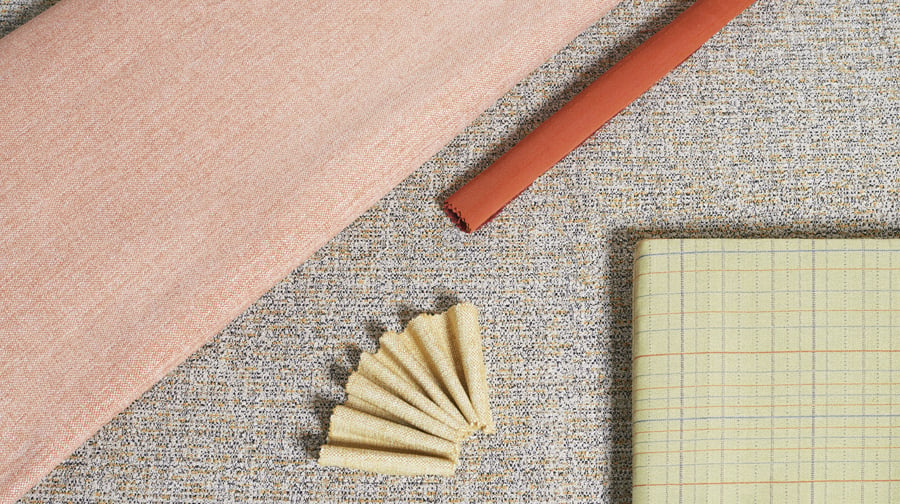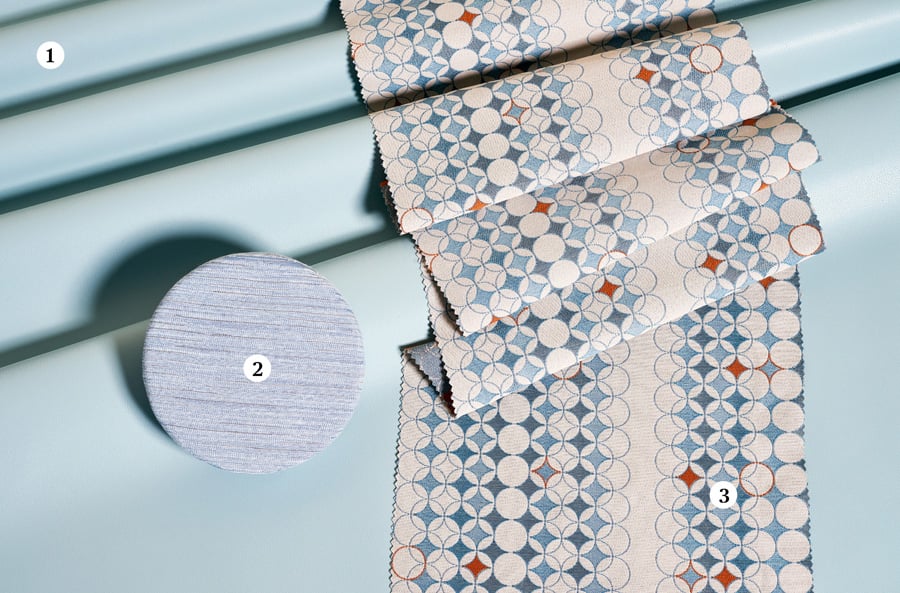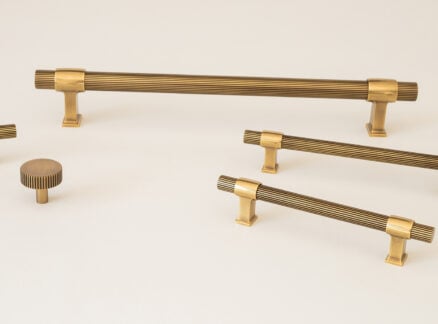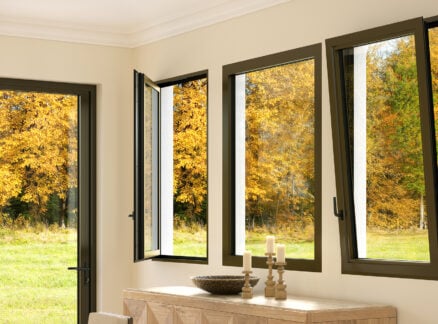
September 25, 2018
Putting the Health Back Into Health-Care Textiles
Textiles are key to designing health and safety into our hospitals—and the industry is changing its thinking about how these fabrics should be made.

Check the label of any contract textile intended for health-care spaces and you’ll plunge into technical details—polyester, acrylic, or nylon, likely treated or chemically engineered to be flame retardant, antimicrobial, and cleanable with bleach or even harsher disinfectants. Then there are the coatings and finishes—one manufacturer lists no fewer than 18 options.
At NeoCon this year, addressing the annual meeting of the Association for Contract Textiles, association president Amanda Eaton, who is also the vice president of design at textile manufacturer Arc-Com, laid out the general problem of material transparency: “What our textiles are made of, where they are made, how they are made, and every chemical input down to the required parts per million—clients are requesting this information from distributors on a daily basis. Each entity has customized their specific wants, calling out different restricted chemicals, different threshold levels, and different reporting formats.” How did health-care textiles get so complicated?
Textiles are an easy scapegoat in hospitals. Curtains, furniture upholstery, bed linens, and even staff uniforms can be breeding grounds for infections. If there is a spill, textiles can stain and capture dirt; in the event of a fire, they can turn into kindling. Today we know that at least some of these fears may be unfounded, but in the 1960s and ’70s, news from U.S. hospitals seemed to bear them out. Textiles were implicated in major hospital res, and “one white paper found that 63 percent of the drapery hanging in the room was infected with both MRSA and Klebsiella pneumoniae,” recalls Je Layne, the founder of Arc-Com.
Manufacturers responded to the headlines. Starting in the 1970s, they shifted their focus to flame-retardant polyester or acrylic yarns like Rovana and Saran. In 1993 Crypton launched the first viable stain-resistant finish for fabrics, and many others followed suit. This millennium, a third wave of innovation took on anti- microbial treatments, yielding products like Crypton Green and Nanotex, as well as BioAm, MorCare, and Prefixx. There seemed to be no end to the performance requirements that textiles could handle. Then in 2012, Kaiser Permanente, one of the nation’s largest hospital systems, 11 other hospital systems, and three nonprofits joined forces to found the Healthier Hospitals Initiative (HHI), pledging to use safer chemicals in their interiors. Kaiser’s suspicions had been aroused by 2003 guidelines from the Centers for Disease Control and Prevention, which urged hospitals to exercise caution in specifying antimicrobial- treated textile products because the EPA had not approved their “health claims asserting protection against human pathogens.” Meanwhile, studies emerged suggesting that many chemicals used in stain-resistant textile coatings or antimicrobial treatments—such as poly- or perfluorinated compounds, ionic silver, and zinc pyrithione—were either carcinogenic or likely to bio- accumulate to toxic levels in humans.

In 2014, Kaiser Permanente banned the use of flame-retardant treatments in any furniture used in its facilities. A year later, 15 chemicals commonly used as antimicrobial coatings or additives were added to the ban. “Health-care interiors can be beautiful spaces designed to inspire health and healing,” John Kouletsis, Kaiser’s vice president of facilities planning and design at the time, said in an October 2015 press release. “But lurking beneath the surface can be a surprising number of pollutants.”
Kaiser could make a decision like this because, by 2016, 20 manufacturers were offering textiles that complied with HHI standards, including major players like Arc-Com, Carnegie, Designtex, Momentum, and Stinson. “The aspiration is not to compromise anything in terms of aesthetic and to be able to get all the performance from the textile itself, without having to put any goop on it,” says Momentum CEO Roger Arciniega. Momentum engineered new yarns, Naked Nylon and Naked Poly, that it periodically has tested to withstand a range of cleaning and disinfectant products—without requiring additional coatings. But some specifiers and hospitals still insist on textiles that are stain-resistant or antimicrobial; for them, manufacturers are attempting to reduce the potential toxicity of those treatments. (Momentum’s C-Zero, produced in partnership with Crypton, claims to be the industry’s first fluorine-free finish.)
It must be noted that HHI-affiliated companies are dealing with a moving target. Health-care facilities are under intense pressure to reduce hospital- acquired infections. It’s all very well to do away with stain-resistant finishes on textiles, but it might mean that hospitals will go for even harsher cleaners, precipitating a sort of race of toxic chemicals. “Every facility and location has a different cleaning protocol,” says Mary Holt, executive VP of creative at Carnegie. “We’ve seen instances where they’re using cleaners that are meant for pots and pans on polyurethane upholsteries.”

Eaton believes we need more nuance when we talk about textile treatments, given the realities of how hospitals operate. “In an ideal world, we would eliminate any big bad chemistry, but those chemistries are doing things that are practical,” she says. In the years since Kaiser Permanente released its list of banned substances, companies have been developing alternatives that claim to avoid negative impacts, sticking to chemicals that are registered with the EPA under the Federal Insecticide, Fungicide, and Rodenticide Act (FIFRA). When Arc-Com set out to find an anti- microbial treatment, for instance, it developed a FIFRA-approved silver- bonded yarn called X-Static.
Others join Eaton in being cautiously pragmatic. Carnegie has long had a policy of “No finish is the best finish.” But Holt qualifies that: “If you’re asking my personal opinion, I think finishing technology is really fascinating and has such a long way to go. I do believe that there will be things that come in the future that are more environmental and protective and helpful; I just don’t think we’re there yet.”
Perhaps, though, designers and specifiers misdiagnosed the problem in placing so much emphasis on textile performance. “It’s very difficult to show a clear link between preventing an out- come such as infection with any singular intervention,” says Linda Dickey, who is a member of the board of directors of the Association for Professionals in Infection Control and Epidemiology.
The jury is still out on antimicrobials, but in the interest of infection control, protocols for hand hygiene and patient bathing have proved their efficacy in clinical studies. So, rather than put the burden of infection prevention on an upholstered chair, facilities may ensure that the hands and bodies that touch it have been disinfected to the fullest extent possible. In fact, the design of our health-care spaces must take heed of cleaning protocols early in the process, using cues to encourage a culture of hygienic practices. Then we can let textiles do what they do best—provide essential visual and tactile comfort—while staying as clean and green as they can.

You might also like, “Take a Tour of Mohawk Group’s Factory—and Its Sustainability-Minded Business Strategy.”





